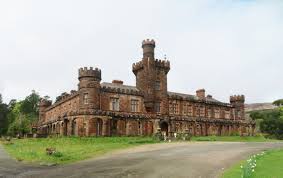Exploring Kinloch Castle: A Scottish Historical Landmark

Introduction
Kinloch Castle, situated on the Isle of Rum in Scotland, is a remarkable example of Victorian architecture that has attracted visitors for decades. Its historical significance and picturesque surroundings make it an essential part of Scotland’s cultural heritage, captivating history enthusiasts, nature lovers, and tourists alike.
History and Architecture
Built in 1897 for Sir George Bullough, a wealthy businessman, Kinloch Castle is a testament to the grandeur of the era. Designed by the architect Thomas Hardy, the castle features an elaborate design, with red sandstone and Gothic elements that reflect the opulence and ambition of the period. Once a luxurious residence, it hosted numerous guests and was the heart of social life on the island.
Unfortunately, the decline of the Bullough family’s fortunes led to the decommissioning of the castle in the 1950s, and it has since fallen into disrepair. The castle is now managed by the Scottish National Heritage, which aims to preserve its history and architecture for future generations.
Current Status and Visits
Today, Kinloch Castle stands as a crumbling but enchanting relic, drawing attention due to its once-impressive grandeur and stunning location amidst the rugged landscapes of Rum. While renovations have been proposed, funding and logistic challenges hinder restoration efforts.
The castle is accessible to visitors during specific times of the year, offering guided tours that provide insights into its history, architecture, and the lives of its former occupants. Visitors can explore the surrounding estate, now a wildlife sanctuary, home to numerous species of birds and unique flora.
Significance for Tourism and Conservation
Kinloch Castle plays a vital role in promoting tourism on the Isle of Rum, attracting visitors who seek to connect with Scotland’s rich history and natural beauty. The castle’s presence not only adds to the island’s allure but also raises awareness of conservation efforts needed to preserve Scotland’s historical sites.
Conclusion
As Kinloch Castle stands as a symbol of Scotland’s Victorian legacy amidst its wild landscapes, it invites reflection on the importance of heritage conservation. The future of Kinloch Castle remains uncertain, yet its historical and cultural significance endures, symbolising the complex relationship between history, architecture, and nature. For those planning a visit, Kinloch Castle offers a glimpse into Scotland’s vibrant past and a unique experience amid its breathtaking beauty.









